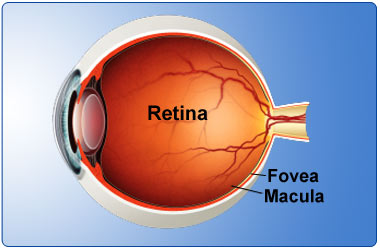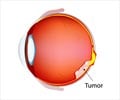- Jack J. Kanski “Retinal detachment”, A colour manual of diagnosis and treatment.
- Hector Chawla,”Retinal detachment” Retinal detachment: the essentials of management.
About
The retina is a thin tissue which lines the inner aspect of the back of the eye ball. When light falls on the eye, it is focused by the optical apparatus of the eye onto the retina. The light is absorbed by the photosensitive pigments in the specialized cells (rods and the cones) of the retina and initiates photochemical changes which are converted to electrical signals which are carried through the optic nerve to the brain. These signals are perceived and interpreted in the brain.
The retina can be compared to the film of a camera onto which the image is captured.
The retina can be divided into the central retina and the peripheral retina. The central retina is for clear central vision. The peripheral retina is for peripheral vision.

Retinal detachment is a condition in which the retina completely or partly detaches from its attachment to the underlying tissues in the eye. Vitreous is a clear gel which fills two third of the eye ball. It may exert a pull on the retina leading to holes or tears in the thin retinal tissue and its separation from the underlying tissues called the retinal detachment. The hole is also called a rhegma, hence the separation due to a hole is called a rhegmatogenous detachment. The vitreous gel may liquefy as part of the normal ageing process or pathologically as in the case of myopia. Liquefied virteous can seep through the hole or tear causing the retina to detach further.
Retinal detachment needs to be treated as soon as possible for good visual recovery. Retinal detachment surgery involves sealing of the hole or tear responsible for the detachment. Successful sealing of the hole causes absorption of the liquefied vitreous and retinal reattachment.
The prognosis of retinal detachment is generally poor. Prognosis is good if the central retina is not detached and early repair done.








